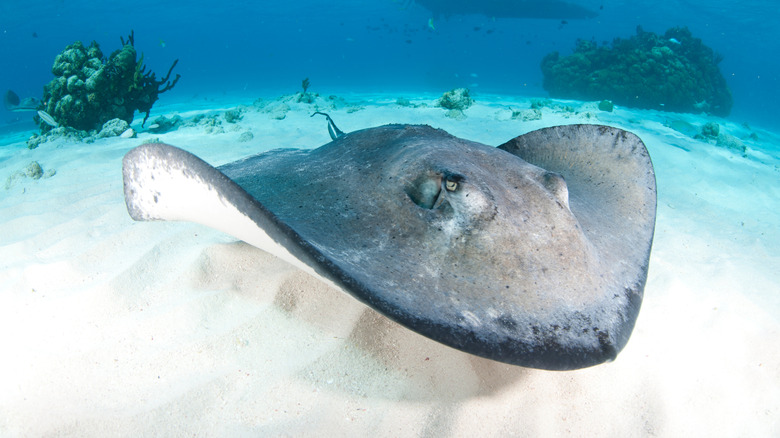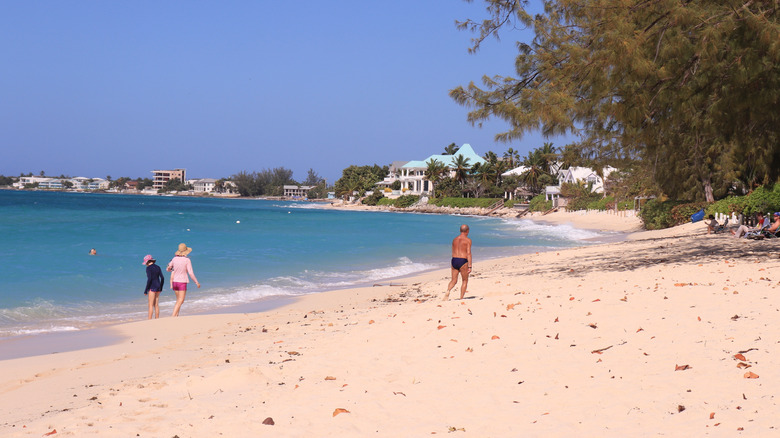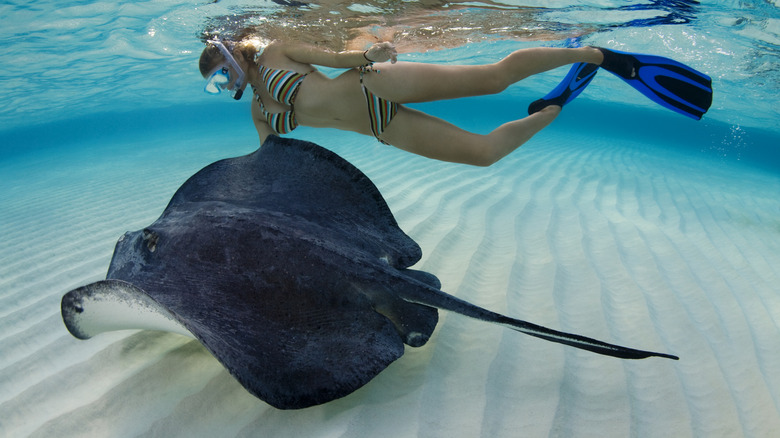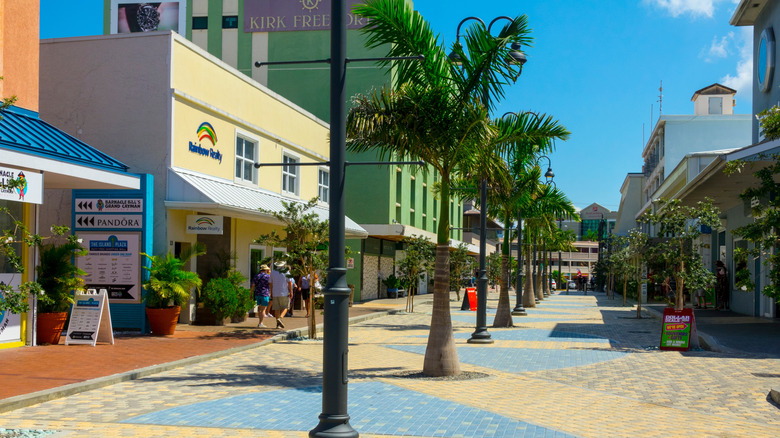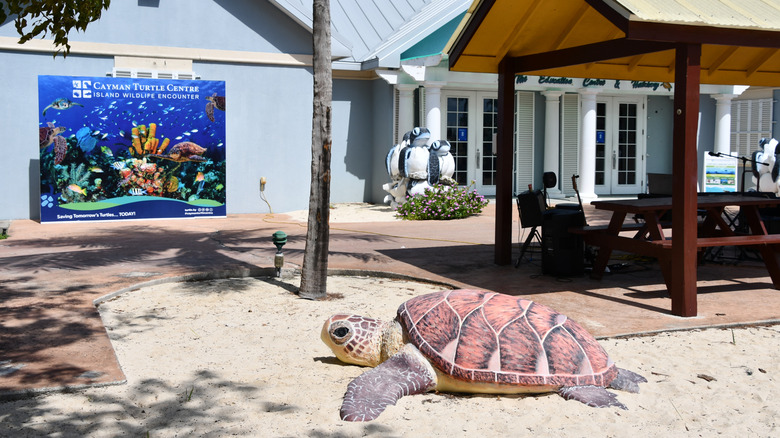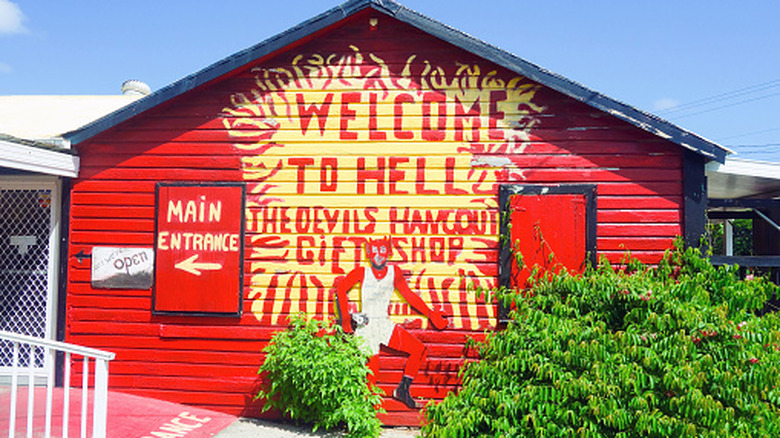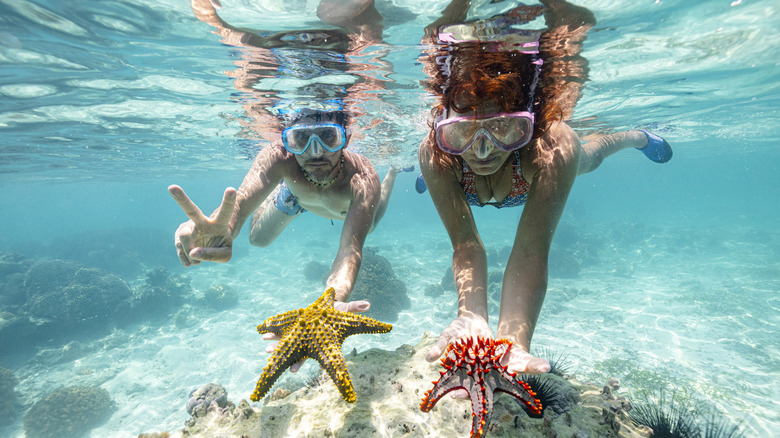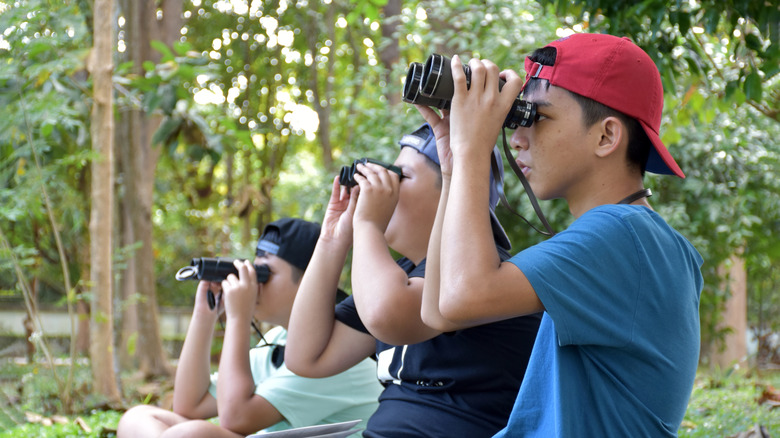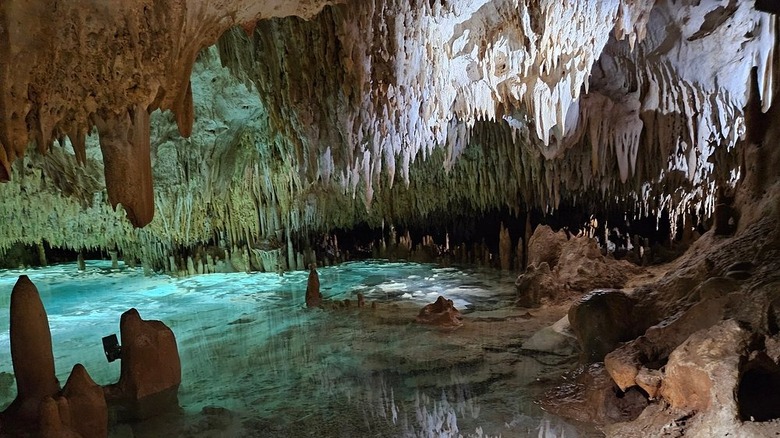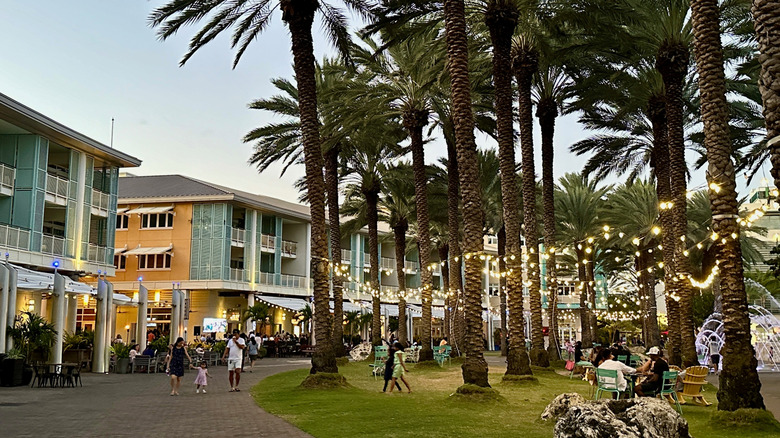10 Best Things To Do In The Cayman Islands
Some travelers love to do nothing but relax when on vacation, while others want to see and do everything a destination offers. The good thing about the Cayman Islands, a trio of islands located in the western Caribbean, is that you can do either — or a little bit of both. Known for the beauty of its beaches and the clarity of its water, Grand Cayman, Little Cayman, and Cayman Brac are havens for snorkelers, divers, and watersports fanatics.
But visitors are also in luck if they love turtles, are fascinated by stingrays, or go bonkers for birds. Golfers, shoppers, and selfie addicts will find happiness, too. Here are our suggestions for the best things to do in the Cayman Islands.
Spend time on Seven Mile Beach
At some point, almost every visitor to Grand Cayman ends up on Seven Mile Beach. There's a good chance your resort will be located here — most of the island's major properties are — or that you'll sign up for a watersports adventure (parasailing, kayaking, Waverunner tour or rental, wakeboarding, or stand-up paddle boarding), all of which are offered here.
But even if all you want to do is find a comfortable chaise, slather on sunscreen and take an occasional dip in the warm, calm, aquamarine waters of the western Caribbean, this 6.4-mile crescent (who can blame locals for rounding up to lucky seven?) of gleaming white sand is a beautiful spot to do it. Located on Grand Cayman's western coast and spanning from just north of George Town to just south of West Bay, Seven Mile Beach is also ideal for enjoying a brisk or relaxing walk and for pulling up a stool in a casual beach bar, ordering a Cayman Lemonade (which quench your thirst but also pack a punch), and watching the sun set in a blaze of tangerine and magenta.
Visit Stingray City
The shallow water at Stingray City is so mesmerizingly clear and blue that many visitors almost forget why they've come. And that would be to snorkel amid, play with and even feed the dozens of local southern stingrays who gather around this sandbar. Even those who aren't keen to interact with the alien-looking but surprisingly playful creatures — who are used to humans and like to brush and rub (and even kiss and occasionally give a little suction-like hickey) to those game enough to stand near their snack-wielding guide — the view from the catamaran is just as good.
Several local outfitters, including Red Sail Sports, offer morning and afternoon excursions, which last about 3.5 hours.
Do some duty-free shopping in George Town
You may have to go elbow to elbow with day-tripping cruise passengers tendering over from their mega-ships anchored offshore, but if you have a taste for watches, jewelry, crystal, electronics, perfumes, or other luxury goods, it might be worth the battle for savings of up to 30 percent.
The Cayman Island's capital, George Town, which runs along the waterfront on the southwestern coast of Grand Cayman, is a bright and colorful duty free haven with several dozen retailers, including Kirk Freeport and Diamonds International, located on or just off of Harbour Drive. Top brands include Breitling, Bulgari, Bulova, Cartier, David Yurman, Gucci, John Hardy, Rolex, and Shinola.
Spot sea life at Cayman Turtle Centre
Its name may be the Cayman Turtle Centre — and there are certainly plenty of turtles to see here, including some green sea turtles weighing up to 500 pounds — but this popular attraction near Grand Cayman's Boatswain's Beach offers wildlife encounters of all kinds, from sharks in Predator's Reef to a nine-foot crocodile in Smiley's Lagoon.
While its mission is research, education, and conservation (including turtle releases), the Turtle Centre also entertains nature enthusiasts of all ages with a swimmable Turtle Lagoon, hands-on interaction in the Turtle Wading Touch Pool, breeding ponds, animal feedings, and more.
Journey to Hell
Yes, Grand Cayman is 99 percent heavenly, but it's also home to a barren patch of 10-million-year-old black limestone that's so desolate and unappealing it's officially named Hell.
Located in West Bay, Hell takes full advantage of its affiliation with its more notorious underworld destination by offering not only a hellish geological backdrop for a selfie (there's a Welcome to Hell sign), but also souvenir shops painted with ghoulish faces and bright orange flames and even a post office, where you can, yes, mail a postcard from Hell.
Snorkel or go wreck and wall diving
It's hard to get bored snorkeling in the Cayman Islands, which is home to some of the Caribbean's top snorkel spots — many, such as Eden Rock and Governor's Beach, located right off of its shoreline and offering easy access to thriving coral reefs with an abundance of tarpon, parrotfish, barracuda, turtles, stingrays, and more. The diving is even more exceptional, with shore access at Devil's Grotto, located not far from Seven Mile Beach, and Turtle Reef near the Cayman Turtle Centre, while more advanced divers can opt for offshore reef, wreck, and wall dives.
Grand Cayman is home to the Kittywake Shipwreck & Artificial Reef, while Cayman Brac has the Captain Keith Tibbetts Wreck as well as underwater sculptures depicting residents of the lost city of Atlantis, created over the years by an expat diver/sculptor named Foots. The third island, Little Cayman, boasts Bloody Bay Marine Park, where the star attraction, Bloody Bay Wall, drops more than 1,000 feet into Cayman Trench and visibility is about 100 feet.
Go golfing
Some travelers just can't get enough green grass, even when surrounded by incredible Caribbean blue sea. If sinking a putt is your favorite way to wind down while on vacation, Grand Cayman offers two options. The Ritz-Carlton, Grand Cayman has a nine-hole course designed by Greg Norman, while the North Sound Golf Club is an 18-hole, par-71 championship course with a signature 11th hole that's exceptionally scenic and favored by locals, including resident iguanas.
Birdwatch
The Cayman Islands may not be large in terms of land mass, but its trio of islands is home to seven protected sanctuaries that host native species, such as the west Indian woodpecker and the northern flicker, and during peak season attract more than 200 others for a total of more than 246 bird species.
On Grand Cayman, the Mastic Reserve is where you can spot all 13 of the island's endemic species. Little Cayman is home to the largest colony of red-footed boobies in the Western Hemisphere, while Cayman Brac draws parrot aficionados to its 180-acre reserve specifically for these colorful and vocal birds, among them the endangered Brac parrot.
Explore the Cayman Crystal Caves
Cayman Crystal Caves is located in Northside and involves a 1.5-hour subterranean tour with a guide through a trio of impressive caves — the open-ceiling cave, the roots cave and the lake cave — that formed over millions of years and feature formations of crystalized calcium deposits. Visitors also get the lay of the land above ground with a 30-minute nature walk in a tropical forest that's home to balsam trees, air plants, and parrots.
Walk around Camana Bay
If resort-town living is your style of beach vacation and you want to see how the locals live in the Cayman Islands, Camana Bay might be high on your Grand Cayman to-do list. This mastered-planned residential and resort community located on 685 acres with a Town Centre with 40+ shops — Polo, Pandora, and Bang & Olufsen among them — as well as 14 restaurants (from seafood to Indian to Asian), a wine bar (with 80 options) and the Cayman Islands' only movie theater (showing current releases). It's a short drive from George Town and walkable from the south end of the Seven Mile Beach strip along West Bay Road.
